The tide goes out
THAT WAS THE WAY THINGS STOOD WHEN A NEW GENERATION OF ENVIRONMENTAL PROFESSIONALS EMERGED FROM THEIR TRAINING TO DO what they could to sustain the “integrity, stability, and beauty of the biotic community.” I was one of that cohort. I ‘d done my graduate work in the department Leopold established at the University of Wisconsin-Madison, advised by Leopold’s last graduate student, Robert McCabe. My colleagues and I studied late into the night in the department’s well-stocked library, looking up occasionally at a bow of osage orange and a quiver of arrows Leopold had made himself, the bow and its arrows hanging in a locked glass case over the original manuscripts of A Sand County.
I think I can speak for many of the professionals of that generation, nearly all of whom are now retired and more or less bitter about the situation as it stands. They— we— expected to lead a charge into the future; instead, we’ve been in a fighting retreat for thirty years or more, which is to say, most of our professional lives.
The momentum of the environmental movement carried the nation for another decade or so after the great surge in public interest and legislative action of the 1960s and 1970s. After bans on their use, concentrations of DDT and PCBs declined in America. Levels of lead in the environment dropped considerably after the ban on lead additives in gasoline. The hole in the ozone layer was repaired. Sulfates and nitrates responsible for acid rain were reduced by forty percent. No rivers have caught fire since the last time Ohio’s Cuyahoga River burst into flames in 1969. The average fuel efficiency of American cars and trucks has improved— ever so slightly—[i] as mileage requirements for new vehicles were raised. Organic farming has managed to get a foothold in the nation’s supermarkets.

Trumpeter swans on Loess Bluffs National Wildlife Refuge, northwest Missouri. (Photo copyright, Chris Madson, 2017, all rights reserved)
Iconic species like the bald eagle, whooping crane, peregrine falcon, trumpeter swan, and black-footed ferret were rescued from the brink of extinction. The gray wolf was successfully reintroduced to Yellowstone National Park and the northern forests of Wisconsin and Minnesota. The rate of destruction of important habitats like freshwater wetlands and native grasslands slowed, kindling some hope among specialists that we would eventually regain some of what had been lost.
But somewhere in the 1980s, the environmental tide turned, and it’s been headed out ever since.
The Clean Water Act of 1972 promised in ringing language “to restore the chemical, physical, and biological integrity of the Nation’s waters.” In the first decade after its adoption, pollution from many “point sources,” the effluent pipes from factories and sewage treatment plants, dropped, and there was reason to believe that America’s waters would soon return to “swimmable, fishable” condition.
Unfortunately, the problem of “nonpoint sources” of pollution, the chemicals and dissolved solids that wash off farmland, suburban lawns, and city streets, was left largely unaddressed. As a result, huge quantities of nutrients like nitrogen and phosphorus, herbicides and insecticides, and loads of sediment continued to find their way into the nation’s streams. As we head toward the fiftieth anniversary of the Clean Water Act, the levels of nitrates in our water are about the same as they were when the act was passed; pesticides continue to float downstream; and an entirely new class of pollutants, endocrine disruptors, are beginning to cause significant physiological problems for a growing list of animals from snails to humans.
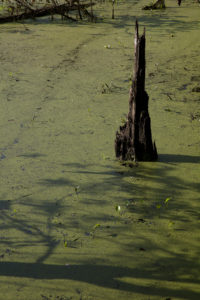
Duckweed on the upper Mississippi River in southeastern Minnesota. (Copyright 2017, Chris Madson, all rights reserved)
The “death” of Lake Erie was one of the most influential parables of the 1960s environmental movement. In that era, a massive overdose of phosphorus from “nonpoint sources” around the lake had triggered gigantic algal blooms. When the algae died and began to decompose, the process consumed most of the oxygen in parts of the lake, creating “dead zones” devoid of any aquatic life. Cooperation between Canada and the United States led to a drastic reduction in particulate phosphorus and a rebound in the lake’s biota, but recent trends in farming have once again boosted the level of dissolved phosphorus, which nourishes huge blooms of blue-green “algae,” actually a form of bacteria that can be highly toxic. The blue-greens have an advantage over true algae in the lake because nothing eats them, not even the exotic zebra mussels that are rapidly displacing native shellfish. The blue-green blooms threaten, not only the wildlife in and on the lake, but people who drink the water.[ii]
On Chesapeake Bay, another of the famous examples of environmental stress in the Sixties, the situation is only marginally better. Thanks to gargantuan efforts and sustained cooperation among several states and the federal government, the bay has shown some improvement in its ecological health over more than forty years, although scientists at the University of Maryland still give its condition no better than a “C” grade overall.[iii] Whether efforts to reduce runoff of sediment and nutrients can be sustained in the face of a steadily growing human population and intensifying farming around the bay is yet to be seen.
The situation on the delta of the Mississippi River is a variation on the same general theme: nutrients have created an oxygen-depleted dead zone off the coast of Louisiana that covered an area the size of New Jersey last summer.[iv]
Then there is the case of the Everglades. Disruption of the historic flow of water and nutrient pollution from massive farming operations and a growing human population have threatened the integrity of America’s most famous wetland for more than a century, but the situation has gotten significantly worse in the last decade. The International Union for Conservation of Nature now includes the Everglades on its list of critically threatened natural areas.[v]
In its most recent assessments of water quality, the EPA found that only twenty-eight percent of the nation’s streams are in “good” biological condition.[vi] Forty percent of the nation’s lakes have “excessive levels” of phosphorus; thirty-five percent have “excessive levels” of total nitrogen; a third of all lakes show problems with invertebrate populations.[vii]
Against this backdrop, the U.S. Supreme Court, in 2001, decided to drastically restrict the scope of one of the Clean Water Act’s most critical terms: “waters of the United States.” The problem of regulating “nonpoint sources” of pollution was difficult enough when it could be addressed at a national level. Now that the smaller tributaries and isolated wetlands are left to the tender mercies of special interests in the states, runoff of nutrients and other pollutants from wide areas will have no control at all and many ephemeral marshes will face the threat of being filled in entirely. Water quality, on the surface and underground, will suffer, along with hundreds of species of wildlife, especially the migratory birds that depend on the continent’s wetlands.
My copy of the state of Wyoming’s fishing regulations is open on my desk. On page 12, it warns me to limit my consumption of the fish I catch from some of the waters here to “2 meals per week (8 ounces per meal before cooking).”[viii] This, in a state with only 560,000 people, a region known for its pristine wilderness. These days, most state fishing regulations carry a similar warning, just one more reminder, if another reminder were needed, that the Clean Water Act is far from achieving the laudable goals it set for itself.
The Clean Air Act has generally done better. Since 1980, the average concentration of carbon monoxide at U.S. sampling stations has dropped eight-five percent; lead levels have dropped ninety-nine percent; nitrogen dioxide levels have dropped sixty-one percent; ozone, by thirty-one percent; sulfur dioxide, by eighty-seven percent.[ix] All of these pollutants are now below standards set under the act. So are particulate emissions. In fact, there’s only one major challenge left in the struggle, but it’s turned out to be the most dangerous of all.
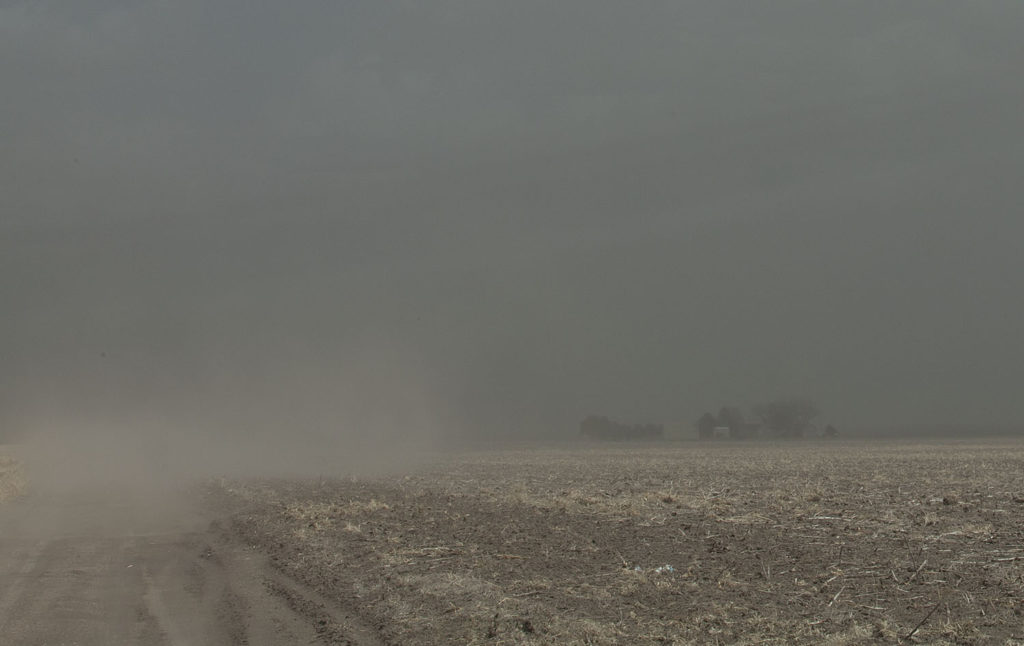
Dust storm in northwestern Kansas, May 2014. (Photo copyright 2017, Chris Madson, all rights reserved)
Greenhouse gases. In the mid-1950s, a young chemistry student, Dave Keeling, wondered whether our rapidly increasing use of coal and oil might be affecting the composition of the atmosphere and increasing the amount of solar radiation trapped on earth. By the middle of the twentieth century, many scientists were considering the same possibility. It wasn’t a new idea. The Swedish chemist Svante Arrhenius proposed the notion that the burning of massive amounts of coal might raise world temperature in 1896, and in 1938, British engineer Guy Callender reported preliminary data that supported Arrhenius’ view.
Keeling’s contribution to studying the relationship was an improved instrument to measure CO2 and a better place to take samples— Hawaii, a site that could be easily reached but was thousands of miles from local sources of CO2, natural or human, that might distort results. He began measuring the concentration of carbon dioxide at the Mauna Loa Observatory in March of 1958. That month, the average CO2 level was 315.71 parts per million. In April of 2018, it averaged 410.26.[x]
In 1965, the members of the President’s Environmental Pollution Panel were concerned enough about climate change to give it an entire chapter in their annual report, Restoring the Quality of Our Environment. They concluded that, “by the year 2000 the increase in atmospheric CO2 will be close to 25%. This may be sufficient to produce measurable and perhaps marked changes in climate, and will almost certainly cause significant changes in the temperature and other properties of the stratosphere.”[xi]
Now, we have the benefit of fifty more years of data collected in a wide-ranging array of climate studies, from the analysis of ancient ice and fossil pollen to the prediction of the future by hyper-sophisticated computer models. The message from all that information and analysis is the same as it was when Keeling first started his CO2 measurements: We’re heating the planet. So is our response: The problem is more than we want to tackle.
While these overarching indicators of American environmental quality have followed their depressing tracks, similar trends have haunted my world, the world of wildlife and wildlife habitat, over the last forty years.
Up until the 1960s, the nation dealt with rare species of wildlife one at a time. High-profile animals like the bison and trumpeter swan captured national attention and were given some support as a result. Rare species with less notoriety were generally neglected.
The nation’s commitment to rare wildlife broadened with the endangered species conservation acts of 1966 and 1969,[xii] and when those laws proved largely ineffective, Congress passed the Endangered Species Act of 1973, a law that established “a program for the conservation of such endangered species” in order to safeguard “the Nation’s heritage in fish, wildlife, and plants.”[xiii] ESA passed in the House of Representatives by a vote of 390 to 12;[xiv] in the Senate, by a vote of 92 to 0,[xv] but, within a decade, it was under attack and has remained one of the nation’s most controversial environmental laws ever since.
An amendment to the law in 1982 is just one example— it created a mind-bending new classification for species that have been proposed for listing as “threatened” or “endangered”: the idea that a listing is “warranted but precluded.” It’s an admission that, although scientific analysis supports a listing, federal wildlife officials are not going to list it. One of the most recent wrinkles in the ongoing assault is a provision in the last four federal budgets that prohibits the U.S. Fish and Wildlife Service from spending any money on processes that might lead to the listing of the greater sage grouse in the interior West.
The act has had its share of successes: Species like the grizzly, gray wolf, whooping crane, California condor, and trumpeter swan, needed more protection from a variety of human activities. When we gave them that protection, they also began to recover. A few, like the black-footed ferret, were specialists that required a specific habitat in order to survive. When we provided that habitat or protected what was left and found ways to produce animals in captivity so they could be reintroduced to the wild, they began to recover, at least to the limit of the habitat they had left. Many of these specialists were probably never abundant or widely distributed— they occupied a relatively small niche on the landscape and could survive nowhere else.
We’ve succeeded where the challenges were relatively straightforward and where there was general public support for the species in need. Where the challenges are more complex, we’ve struggled, partly because of the limits of our scientific understanding of ecology of rare and declining species but mostly because the agency charged with executing ESA has been hamstrung by attacks on its funding and authority.
In the forty-year span of my professional life, three North American birds— the Bachman’s warbler, Eskimo curlew, and ivory-billed woodpecker— probably disappeared from the world. The warbler nested in the swamps of the southeastern United States; the woodpecker was a year-round resident in pristine bottomland forests of the Southeast; the curlew swept across the prairies in America’s heartlands between its tropical wintering areas and its nesting grounds on the northern tundra. In addition, four Hawaiian birds have been extirpated since 1965.
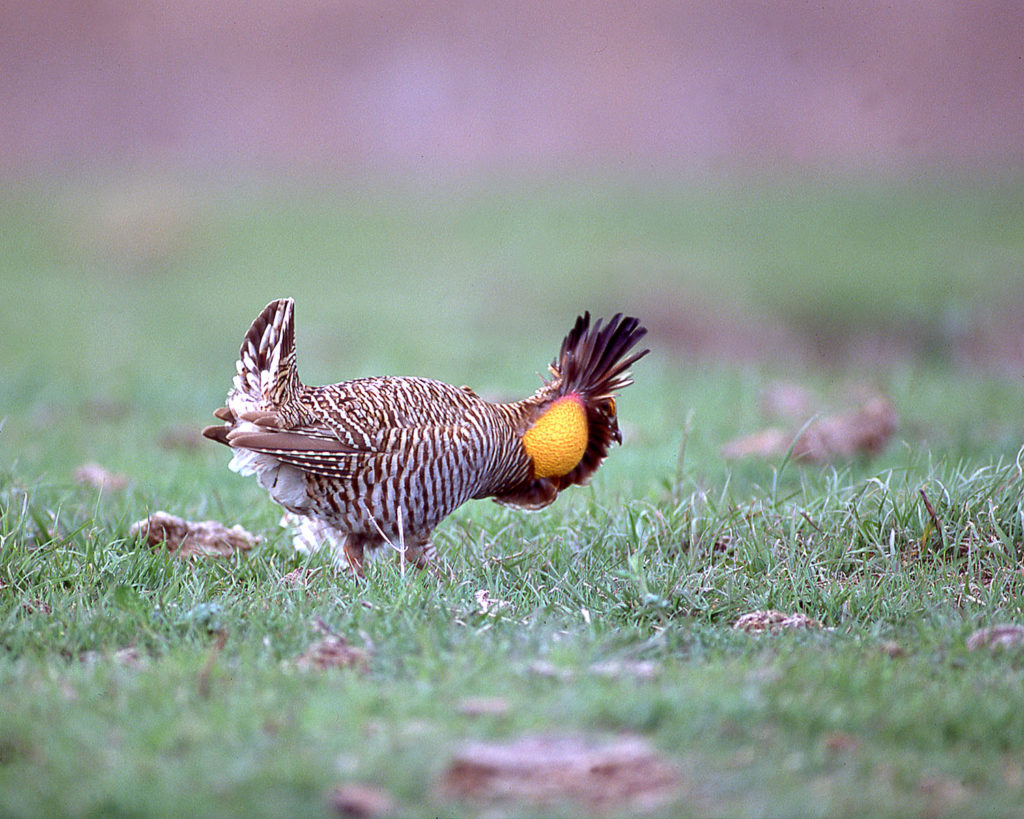
A male Attwater’s prairie chicken displaying on one of the species’ last breeding grounds in southern Texas. Copyright 2015 Chris Madson, all rights reserved.
The Attwater’s prairie chicken of the Texas Gulf coast continues to teeter on the ragged edge of extinction in the wild, and the Gunnison’s sage grouse clings to a precarious existence in the mountain valleys of central Colorado.
As depressing as the ongoing decline of rare birds has been, I’m even more dismayed by the trajectories in populations of common birds I grew up with, species like the eastern meadowlark, once a presence on every other fencepost in the Midwest, a species that has been declining at the rate of more than three percent a year, a drop of nearly ninety percent, since surveys began in 1966.[xvi] Or the northern bobwhite quail— since 1966, bobwhite populations have declined by eighty-eight percent.[xvii]
According to recent research, about a third of the 551 bird species wintering in the United States “have declined over the last five decades, some of them quite dramatically.”[xviii] Some groups are at particular risk. More than half of the fifty-four bird species that live on the oceans around North America are at “high risk,” according to the North American Bird Conservation Initiative. Same proportion applies to the 478 species in America’s tropical and subtropical forests.[xix]
There have been surprising and disheartening declines in the populations of other kinds of wildlife as well. Populations of the mule deer, one of the icons of the American West, have been slipping for nearly forty years across most of the species’ range for reasons researchers and wildlife managers still don’t fully understand. North American bats are reeling under the attack of new diseases. Shocking numbers of amphibians are beset by their own special illnesses and are losing ground as a result. Bees, both our native species and the imported honeybee, are under stress, a trend that threatens the businesses of many farmers who depend on pollinators to fertilize the flowers that eventually become almonds, apples, and other fruit. Numbers of the monarch butterfly, the bug that must surely hold the record among arthropods for greatest human fan base, have dropped by eighty-four percent in the last twenty years.[xx]
No small part of this downward spiral among wild things is due to a loss of key habitats. Two-thirds of the original marshes in the prairie pothole region of the northern prairie have been drained and are now farmed.[xxi][xxii] The tallgrass prairie system that once surrounded these wetlands is in even greater distress— somewhere between eighty-six percent and ninety-nine percent of it has gone under the plow.[xxiii] Farther south, the bottomland forests of the Southeast’s great river systems have been reduced to scattered fragments. Louisiana’s experience is probably typical— one report states that the loss “is estimated to be 50 to 75% of the original presettlement acreage, statewide. Old-growth examples of this habitat type are very rare.” The strange thickets of native bamboo that frontiersmen called “the canebrake” have been reduced to about two percent of their original area and are considered a “critically endangered ecosystem.”[xxiv]
Much of this damage occurred before the environmental movement peaked in the early 1970s. There’s a lag time between the destruction of a habitat type and the disappearance of the animals that depend on it, so the extinction of animals that depended on these systems is, to a marked degree, the legacy of land-use decisions that were made and executed before I was born. The ongoing declines in populations of more common wildlife since the 1970s are, in part, a reflection of outright loss of habitat, but they’re also a frightening indicator of the poor health of the wild places we have left.
Some of the wild species in decline are specialists whose limited niches are under special stress. Many more are generalists, capable of exploiting a wide variety of food and cover, often traveling over vast areas of the hemisphere. Their struggle may be the most accurate assessment we have of the ecological condition of the continent, and that picture is far from encouraging. Leopold described the view of many wildlife specialists of this generation when he wrote that “one of the penalties of an ecological education is that one lives alone in a world of wounds.”[xxv]
NEXT INSTALLMENT: WHAT HAPPENED?
[i] http://www.umich.edu/~umtriswt/PDF/SWT-2017-5_Abstract_English.pdf. Accessed May 2, 2018.
[ii] Egan, Dan, 2017. The Death and Life of the Great Lakes. W.W. Norton & Company, New York, NY. pp 212-229.
[iii] https://www.umces.edu/content/chesapeake-bay-report-card-shows-steady-bay-health-recovery. Accessed May 6, 2018.
[iv] https://www.npr.org/sections/thesalt/2017/08/03/541222717/the-gulf-of-mexicos-dead-zone-is-the-biggest-ever-seen. Accessed May 6, 2018.
[v] https://www.worldheritageoutlook.iucn.org/explore-sites/wdpaid/2012. Accessed May 6, 2018.
[vi] U.S. Environmental Protection Agency, 2016. National Rivers and Streams Assessment 2008-2009: A Collaborative Survey. EPA/841/R-16/007, Washington, D.C. p.xiii.
[vii] U.S. Environmental Protection Agency, 2016. National Lakes Assessment 2012: A Collaborative Survey of Lakes in the United States. EPA 841-R-16-113, Washington, D.C. p.1.
[viii] Wyoming Game and Fish Department, 2018. Wyoming fishing regulations. Wyoming Game and Fish Department, Cheyenne, WY. P.12.
[ix] https://www.epa.gov/air-trends/. Accessed May 9, 2018.
[x] ftp://aftp.cmdl.noaa.gov/products/trends/co2/co2_mm_mlo.txt. Accessed May 9, 2018.
[xi] Tukey, John W., et al, 1965. Restoring the Quality of Our Environment. U.S. Government Printing Office, Washington, D.C. pp.126-127.
[xii] Bean Michael J. and Melanice J. Rowland, 1997. The evolution of national wildlife law. Praeger Publishers, Westport, CT. pp. 194 ff.
[xiii] U.S. Code, Title 16, Chapter 35, §1531.
[xiv] Congressional Record, House of Representatives, September 18, 1973. p.30168.
[xv] Congressional Record, Senate, July 24, 1973. p.25694.
[xvi] https://www.mbr-pwrc.usgs.gov/cgi-bin/atlasa15.pl?05010&1&15&csrfmiddlewaretoken=3YKakk7LxT2ki6NSpl4mstudYCqdW02C. Accessed May 10, 2018.
[xvii] https://www.mbr-pwrc.usgs.gov/cgi-bin/atlasa15.pl?02890&1&15&csrfmiddlewaretoken=3YKakk7LxT2ki6NSpl4mstudYCqdW02C. Accessed May 10, 2018.
[xviii] Sykan, Canadan U., et al, 2016. Population trends for North American winter birds based on heirachical models. Ecosphere 7(5):12.
[xix] North American Bird Conservation Initiative, 2016. The state of North American birds. Environment and Climate Change Canada, Ottawa, Ont.
[xx] Throgmartin, Wayne, E., et al, 2017. Monarch butterfly population decline in North America: identifying the threatening processes. Royal Society Open Science 4: 170760. http://dx.doi.org/10.1098/rsos.170760.
[xxi] Dahl, Thomas E., 1990. Wetland losses in the United States, 1780s to 1980s. U.S. Department of the Interior, Fish and Wildlife Service, Washington, D.C. p.6.
[xxii] Dahl, Thomas E., 2014. Status and trends of prairie wetlands in the United States 1997 to 2009. U.S. Department of the Interior; Fish and Wildlife Service, Ecological Services, Washington, D.C. p.18.
[xxiii] Samson, Fred B., Fritz L. Knopf, and Wayne R. Ostlie, 2004. Great Plains ecosystems: past, present, and future. Wildlife Society Bulletin 32(1): 6-15.
[xxiv] Platt, Steven G. and Christopher G. Brantley, 1997. Canebrakes: An ecological and historical perspective. Castanea 62(1): 8-21.
[xxv] Leopold, Aldo, 1953. Round River. Oxford University Press, New York, NY. p.165.
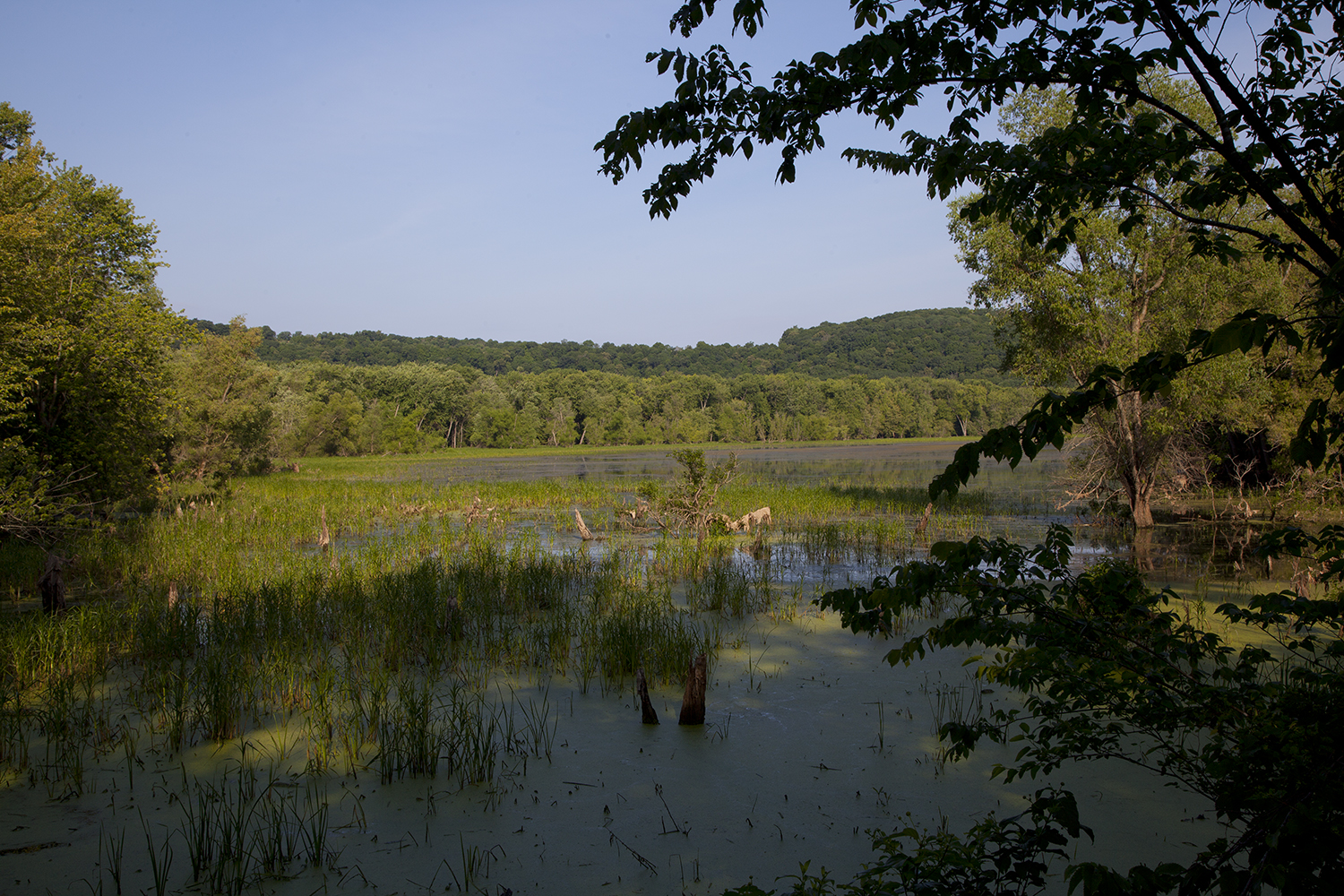
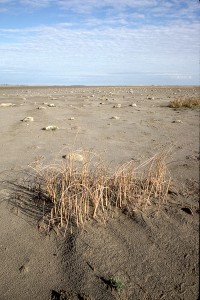
Leave a Reply
You must be logged in to post a comment.